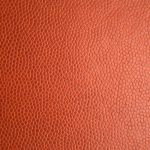Yes, you can dye your upholstery to give your fabric furniture a fresh new look. Start by identifying the fabric type since natural fibers like cotton absorb dye best, while synthetics need special dyes. Clean your furniture thoroughly and test the dye on a hidden spot to avoid damage. Apply the dye evenly and let it dry completely for lasting color. With a few simple steps, you can easily transform your furniture’s appearance and keep it vibrant for years to come.
Table of Contents
Key Takeaways
- Upholstery can be dyed, but fabric type (natural, synthetic, or blended) affects dye absorption and final color results.
- Choose the correct dye type based on fabric: fiber-reactive for cotton, disperse for polyester, and acid for acrylic.
- Always clean and dry furniture thoroughly, and test dye on a hidden spot before full application to ensure color and fabric compatibility.
- Apply dye evenly with a sponge or spray, allow it to soak, and let upholstery dry completely before use.
- Maintain dyed upholstery by vacuuming gently, avoiding direct sunlight, and using mild, color-safe cleaners to preserve color vibrancy.
Understanding Different Types of Upholstery Fabrics
When you’re dyeing upholstery, knowing the type of fabric you’re working with is essential. Different fabrics absorb dye differently, so identifying whether your upholstery is natural, synthetic, or a blend helps you achieve the best results.
Natural fibers like cotton, linen, and wool tend to soak up dye well, giving you vibrant colors. Synthetic fabrics such as polyester, nylon, or acrylic often resist dye, requiring special dyes or treatments. Blended fabrics can be tricky since they combine properties from both types, so testing a small hidden area first is wise.
You should also consider the fabric’s weave and texture, as tightly woven materials may need longer dyeing times. Understanding these factors prepares you for a successful dyeing project without damaging your furniture.
Choosing the Right Dye for Your Upholstery
You’ll want to pick a dye that matches your upholstery’s fabric type to guarantee proper absorption and colorfastness.
Different dye formulations work best with specific materials, so understanding these options helps you get the results you want.
Let’s explore how to choose the right dye based on your fabric and its needs.
Fabric Type Compatibility
Selecting the right dye for your upholstery hinges on understanding the fabric type you’re working with. Different fabrics absorb dyes differently, so matching your dye to the fabric guarantees vibrant, lasting color. Natural fibers like cotton and linen take dye easily, while synthetics such as polyester require special dyes.
| Fabric Type | Recommended Dye Type |
|---|---|
| Cotton | Fiber-reactive dye |
| Linen | Fiber-reactive dye |
| Polyester | Disperse dye |
| Acrylic | Acid dye |
Before dyeing, check the fabric label or test a hidden spot. This step helps you avoid damage and guarantees the best results. Knowing fabric compatibility saves time and effort, giving your upholstery a fresh, flawless look.
Dye Formulations Explained
Understanding fabric compatibility lays the groundwork for choosing the right dye formulation for your upholstery project.
Different fibers require specific dyes to guarantee vibrant, long-lasting color. For natural fibers like cotton, linen, and wool, fiber-reactive or acid dyes work best—they bond chemically, offering durability.
Synthetic fabrics such as polyester or nylon demand disperse dyes, designed to penetrate their tight fibers. When dealing with blends, consider the dominant fiber to select an appropriate dye or use a universal dye formulated for mixed materials.
Always check the dye’s instructions and test a small hidden area first to avoid surprises.
Picking the right dye means your upholstery not only looks great but holds up well, saving you time and assuring your furniture stays stunning for years.
Preparing Your Furniture for Dyeing
Start by thoroughly cleaning your furniture to remove dirt, oils, and old stains that could interfere with the dye’s absorption. Use a gentle upholstery cleaner or a mixture of mild detergent and water.
Test it in an inconspicuous spot first to verify it won’t damage the fabric. After cleaning, let the furniture dry completely—any moisture can affect how well the dye sets.
Remove any detachable parts like cushions or slipcovers to make the process easier and more even. Protect surrounding areas with drop cloths or plastic sheeting to avoid accidental spills.
Finally, inspect the fabric for any tears or weak spots and repair them before dyeing. Proper preparation guarantees your dye job looks smooth and lasts longer.
Step-by-Step Dyeing Process for Upholstery
With your furniture clean, dry, and prepped, you’re ready to apply the dye. Start by testing the dye on a hidden spot to check color and fabric reaction. Use a sponge or spray bottle for even application, working in small sections. Let the dye soak in for the recommended time, then rinse or blot excess dye if needed. Allow the upholstery to dry completely before use.
| Step | Action | Tip |
|---|---|---|
| 1 | Test dye on hidden fabric | Check for color accuracy |
| 2 | Apply dye evenly | Use sponge or spray |
| 3 | Let dye soak | Follow dye instructions |
| 4 | Dry completely | Avoid direct sunlight |
Tips for Achieving an Even and Long-Lasting Color
Although dyeing upholstery can transform your furniture, achieving an even and long-lasting color requires careful attention to preparation and technique.
First, thoroughly clean the fabric to remove dirt and oils, ensuring the dye adheres properly. Test the dye on a small, hidden area to check color compatibility and fabric reaction.
Apply the dye evenly using a spray bottle or sponge, working in thin layers to avoid streaks. Allow each layer to dry completely before applying the next.
After dyeing, use a fabric sealant or fixative designed for upholstery to lock in the color and improve durability.
Finally, avoid exposing your dyed upholstery to direct sunlight and moisture to maintain its vibrancy and extend the life of the color.
Common Mistakes to Avoid When Dyeing Upholstery
When you dye upholstery, overlooking key steps can lead to uneven color, fabric damage, or poor durability. One common mistake is skipping the fabric test. Always test your dye on a hidden spot to check color absorption and fabric reaction.
Another error is neglecting surface preparation; failing to clean your upholstery thoroughly results in blotchy dyeing. Avoid using the wrong dye type for your fabric—this can cause fading or peeling. Applying too much dye at once leads to streaks, so apply thin, even coats.
Rushing the drying process traps moisture, which can weaken fibers or cause mildew. Finally, don’t forget to protect surrounding areas to avoid accidental staining. By steering clear of these mistakes, you’ll achieve a vibrant, lasting finish.
Caring for Dyed Upholstery to Maintain Vibrancy
Avoiding mistakes during dyeing sets the stage for vibrant upholstery, but maintaining that color requires ongoing care.
To keep your dyed fabric looking fresh, vacuum regularly with a soft brush attachment to remove dust and dirt that can dull the color. Avoid placing your furniture in direct sunlight, as UV rays fade dyes over time.
When cleaning, use mild, color-safe upholstery cleaners and test on a hidden area first. Blot spills immediately with a clean cloth to prevent stains from setting.
Consider using fabric protectors designed for dyed upholstery to add a protective barrier. Finally, rotate cushions and pillows periodically to guarantee even wear and fading.
With these steps, you’ll preserve your fabric’s vibrant look and extend its lifespan.
Frequently Asked Questions
Can I Dye Upholstery That Has Stains or Odors?
You can dye upholstery with stains or odors, but you should clean and treat them first. Otherwise, the dye might not cover evenly, and odors can still linger through the fabric after dyeing.
Is It Safe to Dye Upholstery Around Pets and Children?
Back in the day, folks didn’t worry about safety like we do now. You shouldn’t dye upholstery around pets or kids without proper ventilation and non-toxic dyes. Always keep them away until the fabric’s fully dry and odor-free.
How Long Does the Dyeing Process Typically Take?
The dyeing process typically takes a few hours to a full day, depending on fabric type and drying time. You’ll need patience for prep, application, and drying to guarantee vibrant, lasting color on your upholstery.
Can I Dye Upholstery That Has a Protective Coating?
You probably can’t dye upholstery with a protective coating because the finish blocks dye absorption. You’ll need to remove or sand the coating first, or else the color won’t penetrate and won’t hold properly.
Will Dyeing Upholstery Affect Its Texture or Softness?
Softness shifts subtly when you dye upholstery, sometimes stiffening fibers or flattening fluff. You’ll want to test a tiny, hidden spot first because dye can change texture, making your fabric feel different than before.
- The Use of Nonwovens in Construction and Civil Engineering - July 11, 2025
- The Use of Nonwovens in Construction and Civil Engineering - July 11, 2025
- The Use of Nonwovens in Construction and Civil Engineering - July 11, 2025






